Topping D50 III HIFI DAC – Desktop ESS Studio Dynamics
Topping D50 III is a $229 USD HIFI DAC with a beautiful silver metallic case, Bluetooth input, TRS Balanced outputs, and RCA Single Ended outputs, with a mini display, and with High Resolution support. Today we will explore how the new D50 III sounds like, and how it compares to other high-quality DACs from the same price range, including Creative Sound Blaster X5 (299 USD), Aune X1s GT (349 USD), and Pro-Ject DAC BOX DS (430 USD).
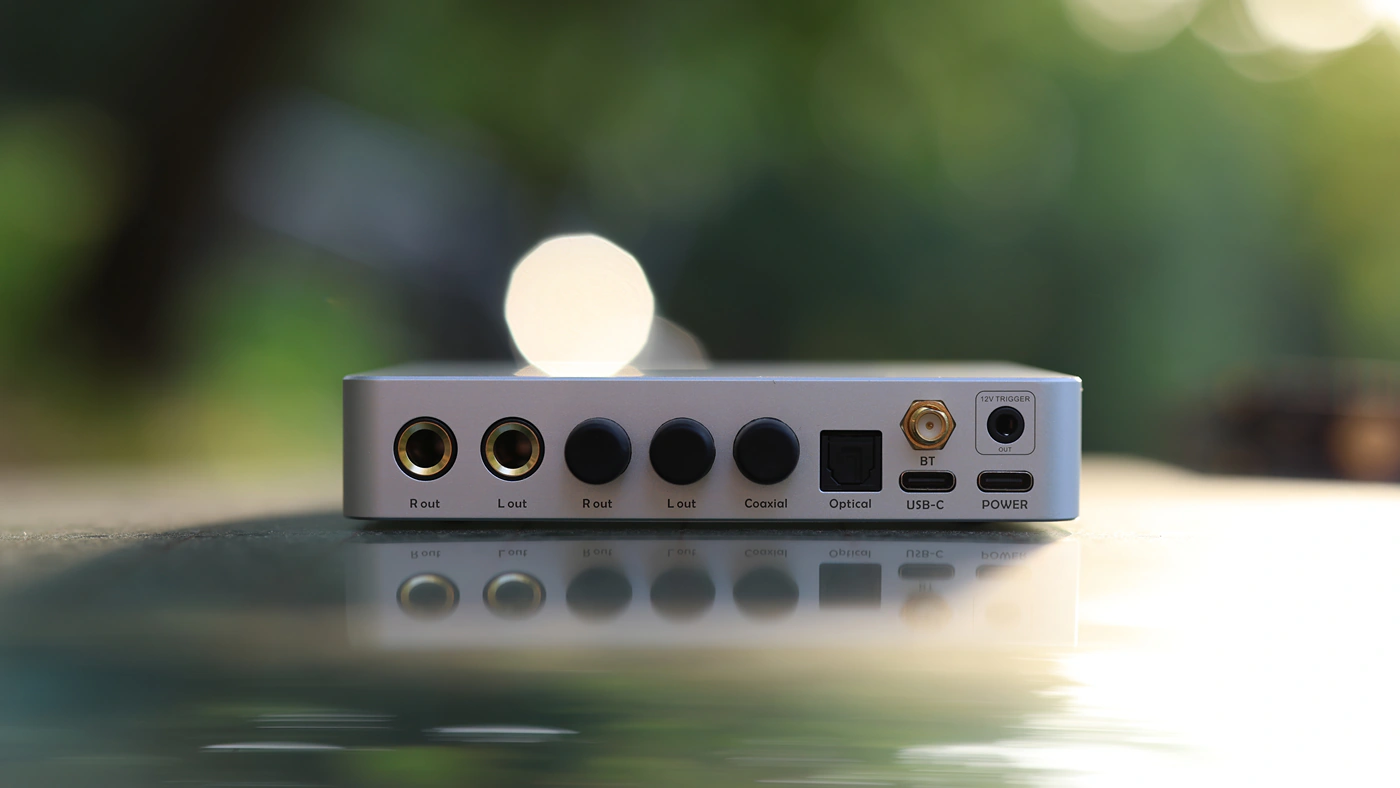
Introduction
Topping is a popular HIFI Electronic producer from China, having many products from all price ranges in their offer. We currently only have reviewed entry-level offers from them, the D50 III we are working on exploring today also being an entry-level product, but we are hopeful in the future we will get a chance to explore what the coffers of high-end Topping hold for their customers and music enthusiasts. As an Amazon Influencer, I earn from qualifying purchases, and using the purchase links in my reviews helps me maintain this website and Youtube Channel. A huge thanks to Topping for providing us with the sample for this review.
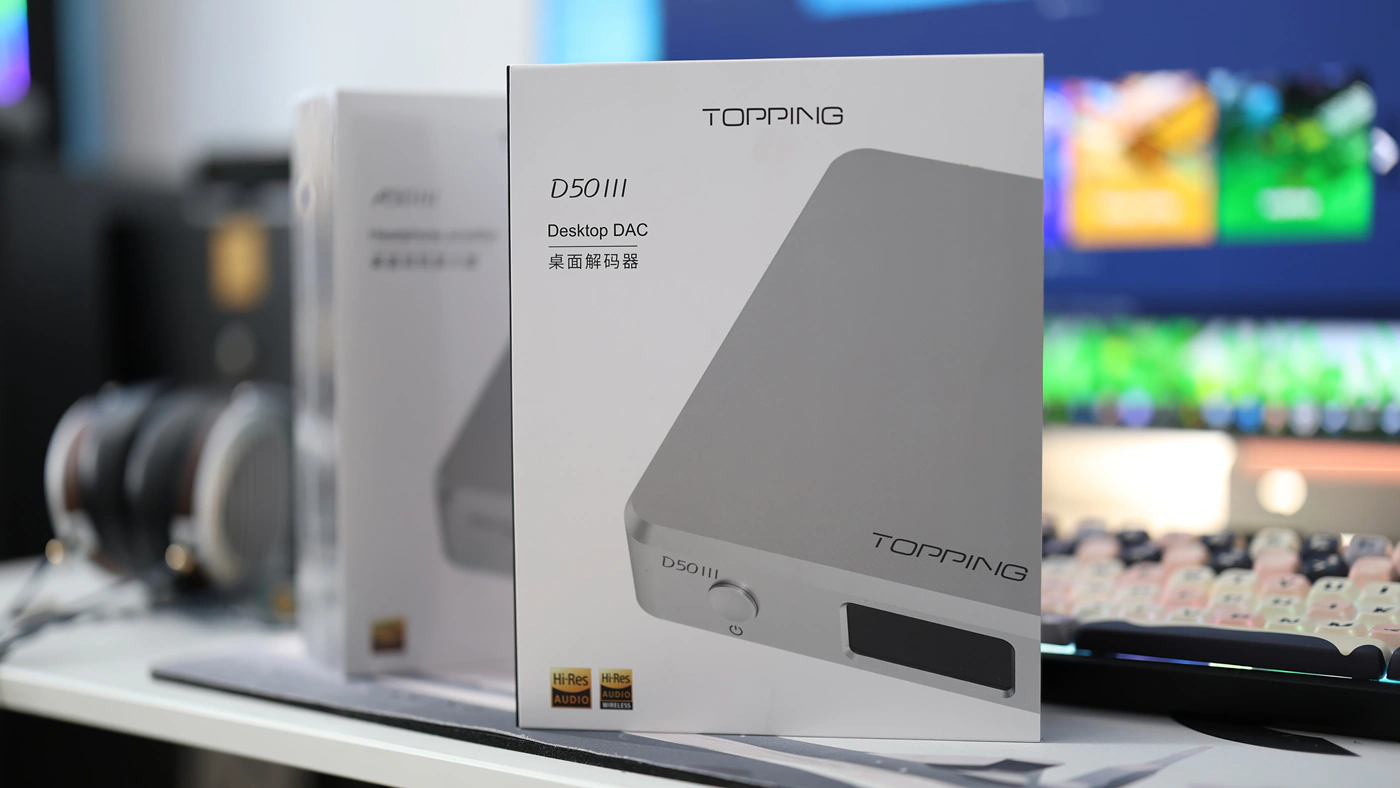
PROs – Relaxed tuning with very little stress, natural to slow bass which creates a clean sound, forward midrange which enhances the vocal acuity and makes lyrics easy to understand, treble is airy but soft, silky and gentle. There is no background noise, and you can select which outputs it is currently using. The PRE function works well, with no loss in detail, resolution or clarity. Great package with a solid chassis, and it does not grow hot with usage. We even have 10 bands parametric EQ support. Remote works great with its Bluetooth connection.
Cons – Needs additional software for using the EQ function. The display is exposed and will likely break if you push with your finger on it. Slightly mid centric sound with a relaxed texture will hide mistakes, but is not for all music styles as it takes away energy from rock and metal.
Product Link
You can grab one here – https://amzn.to/4eFZ0vH
Build Quality/Aesthetics
Topping D50 III is one of the most compact DACs on the market, and it also can be bundled with the Topping A50 III Amplifier, for a stack that is smaller than the JDS Labs Atom DAC 2 + Atom AMP 2. The build quality of the D50III is impressive. As the chassis is fully made of metal, and it has no errors in the production, only perfectly cut and chamfered aluminum.
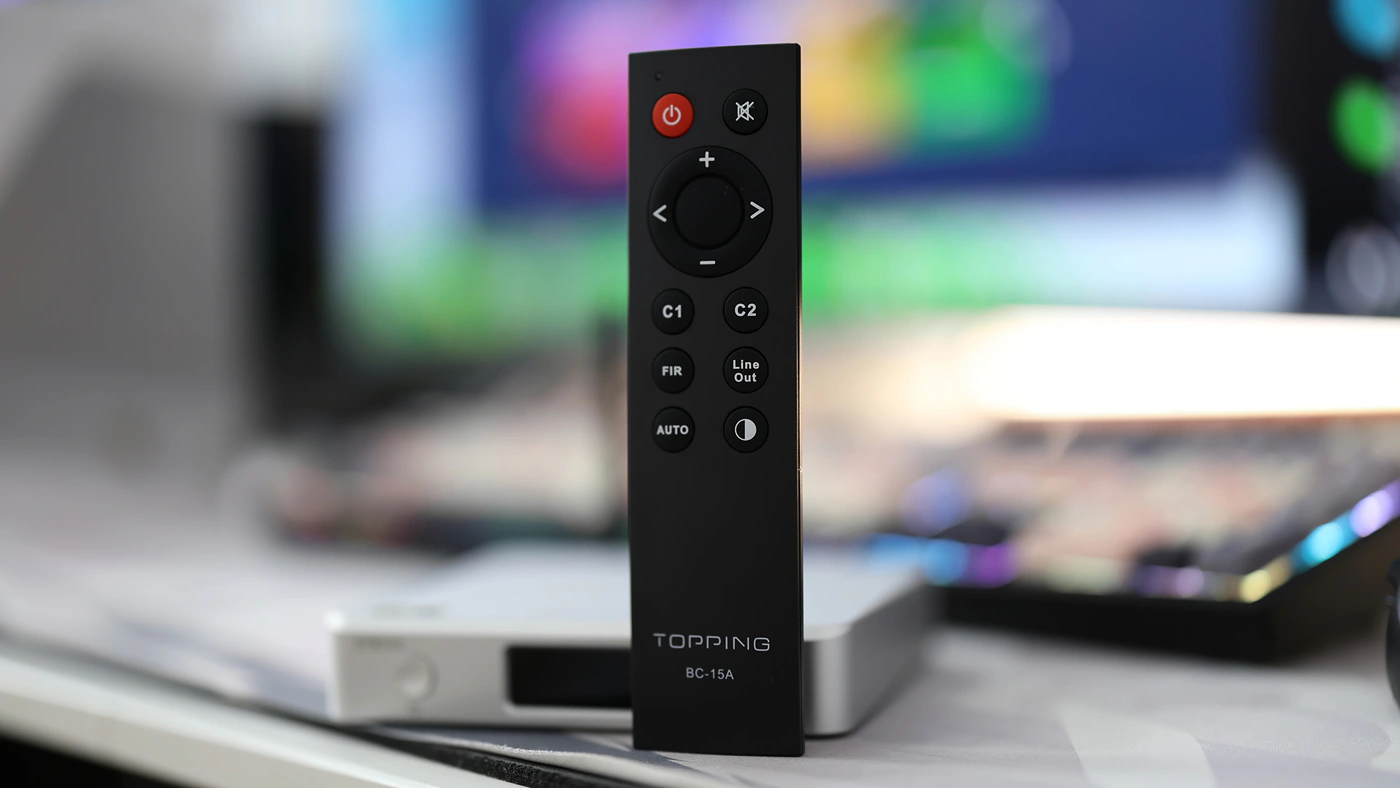
At the heart of this mini entry-level DAC we have a Dual ESS DAC configuration, relying on the popular ES9039Q2M CHIP, which has been seen before in Matrix Mini-i PRO 4, a DAC costing almost 1000 USD. To pair with a good DAC, we have LDAC support, a Bluetooth algorithm which sounds almost as good as lossless does, and a THD that is smaller than 0.00006%.
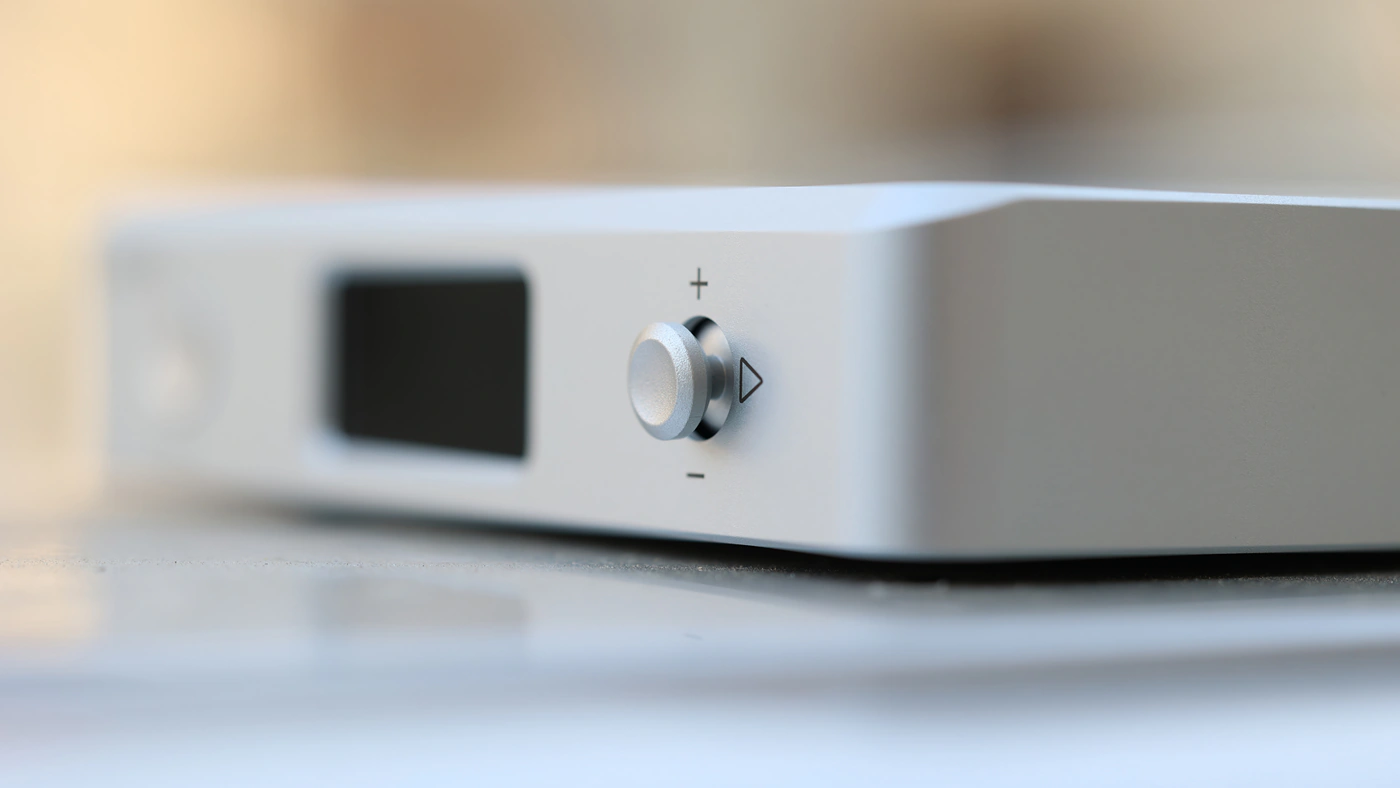
The Dual Type-C USB input at the back allows you to either use one USB Cable to power the D50 III or two cables, one for data and one for power, to isolate some of the noise that typically comes from a PC computer. As the DAC has a SNR of 132 dB, and a DNR or Dynamic Range of 132 dB, it is one of the DACs with the highest technical specs out there. The Noise level is low, at lower than 1.3 uVrms. Despite it being mostly popular for the Type-C USB input and considered an excellent USB DAC, D50 Mark III comes with multiple other inputs, including Coaxial and Optical, although you will have to populate the Power input to use those, as a device cannot draw power from an Optical signal.
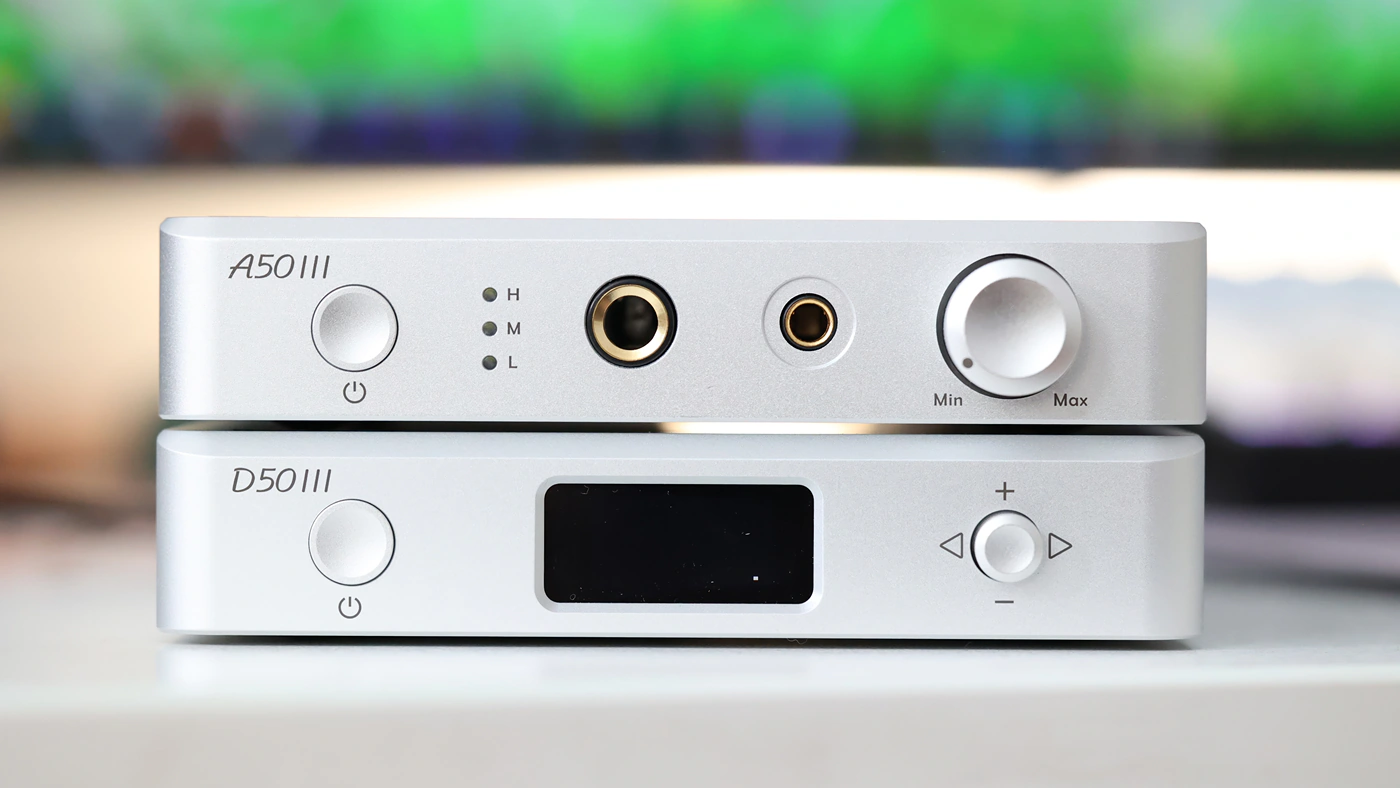
The outputs include either an RCA Line Out which is Single Ended, or a TRS output, which is balanced, and which is typically used for studio applications, especially studio monitors. It is possible to select the voltage of the TRS output, just the way you can set it with most XLR based DACs, between 5V and 4V, and this will set the RCA too, so RCA can be set between 2V and 2.5V. There is a 12V trigger output, which basically allows the D50 III to wake up the amplifier it is connected to, so they can turn on and off at the same time, especially useful if you’re purchasing the Topping a50 III as well.
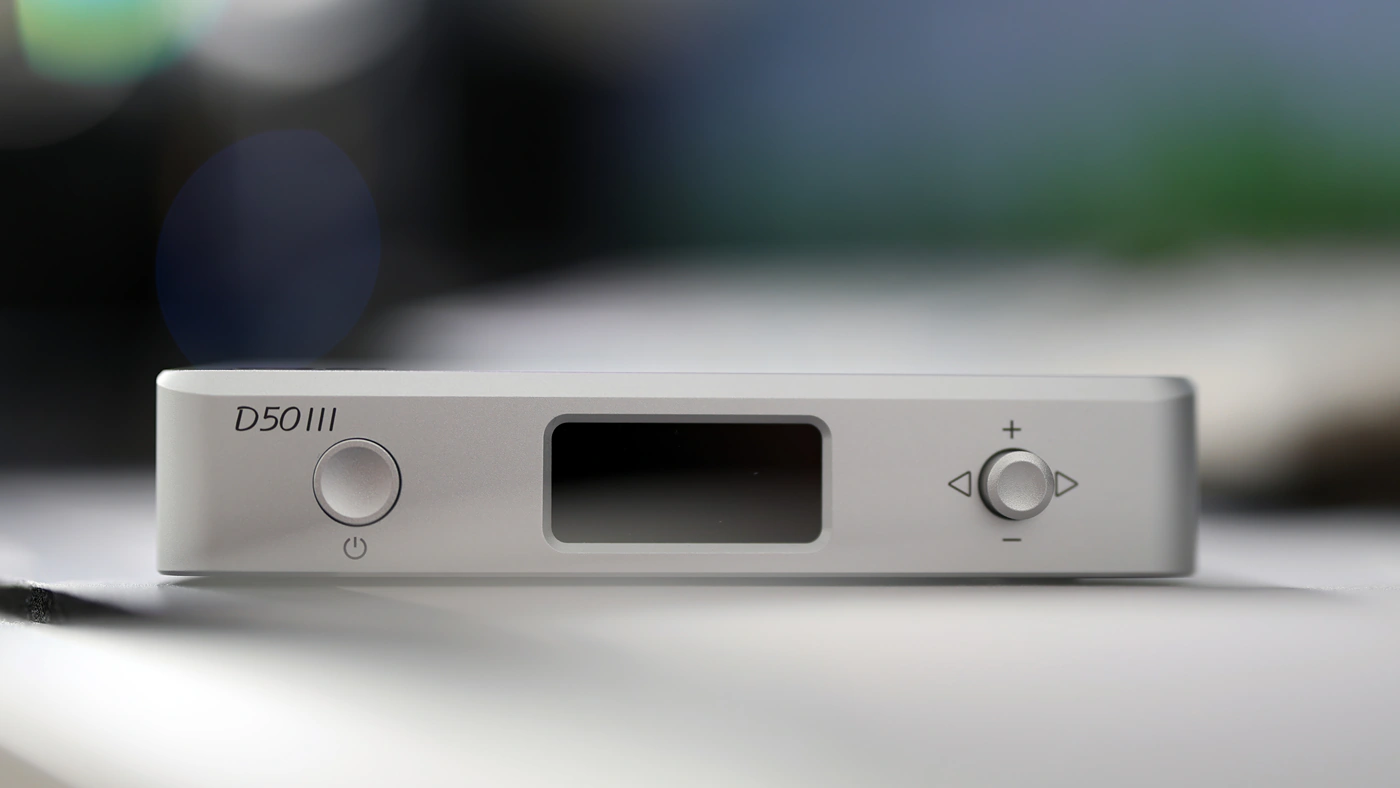
You can run the D50III in PREAMP mode, which allows you to set the volume using it, especially useful when connecting it with large amplifiers such as Keces S300+, as it does not have a volume controller. The remote works via 2.4G Bluetooth, which is unique to Topping, and it seems to work even if the remote is not aimed at the DAC.
USB DAC / Subjective Usage
The USB DAC inside of the Topping D50-3 is plug and play, and you will not need a separate driver for Windows, MAC or Linux. For USB inputs, we have a Ten-Band Parametric EQ that we can use, although it requires additional software for this function. I have experienced the DAC not being seen by Windows a couple of times upon restart, and this was fixed by removing and plugging back the Type-C USB cable. I also had once the DAC sound weird, but had to reset the data rate to maximum in windows settings, and that fixed it.
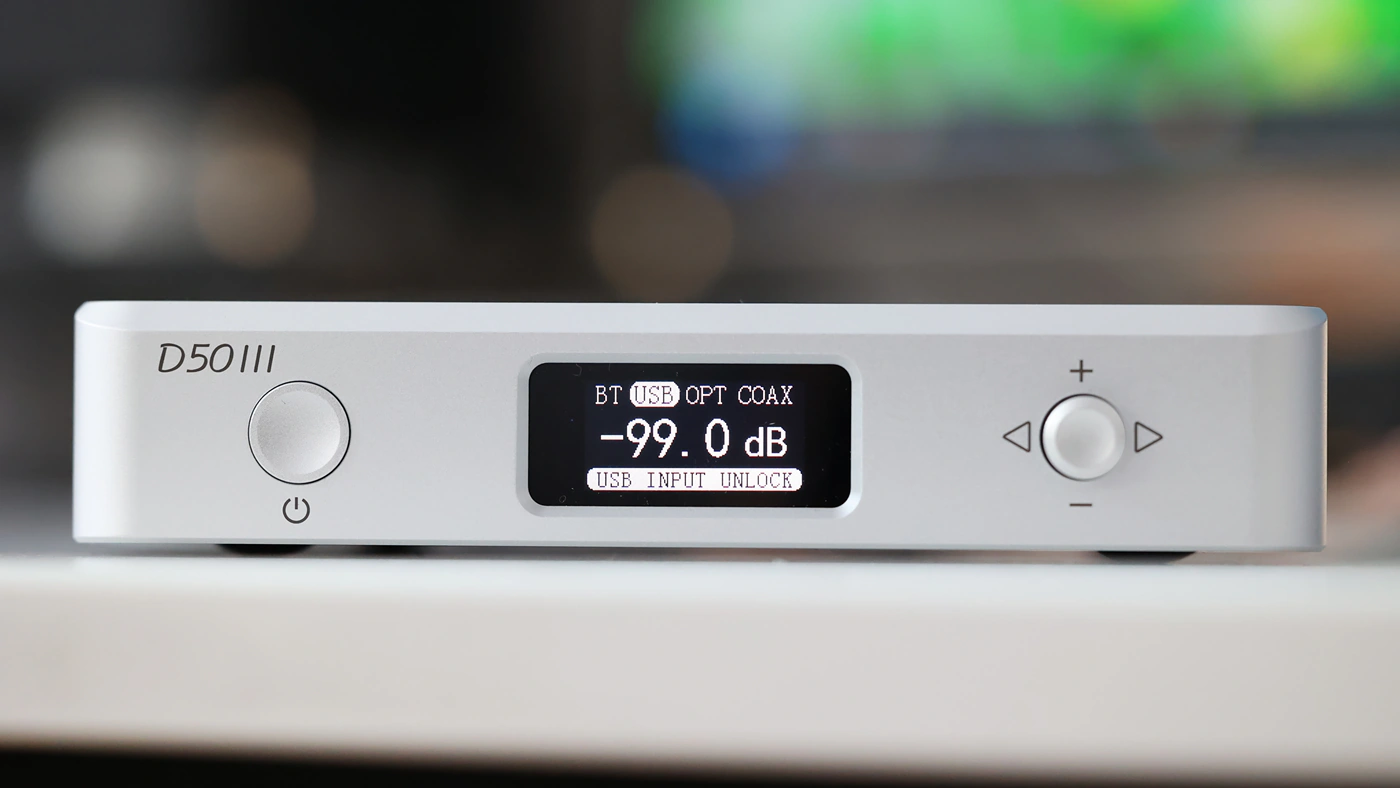
The USB DAC function is flawless, I experienced no dropouts or odd noises, plus the background noise seems to be completely silent for the TRS Balanced output. There is no USB DAC delay that I can notice, and if there were, it is below a single frame, so you can use the D50 III for playing games and watching movies.
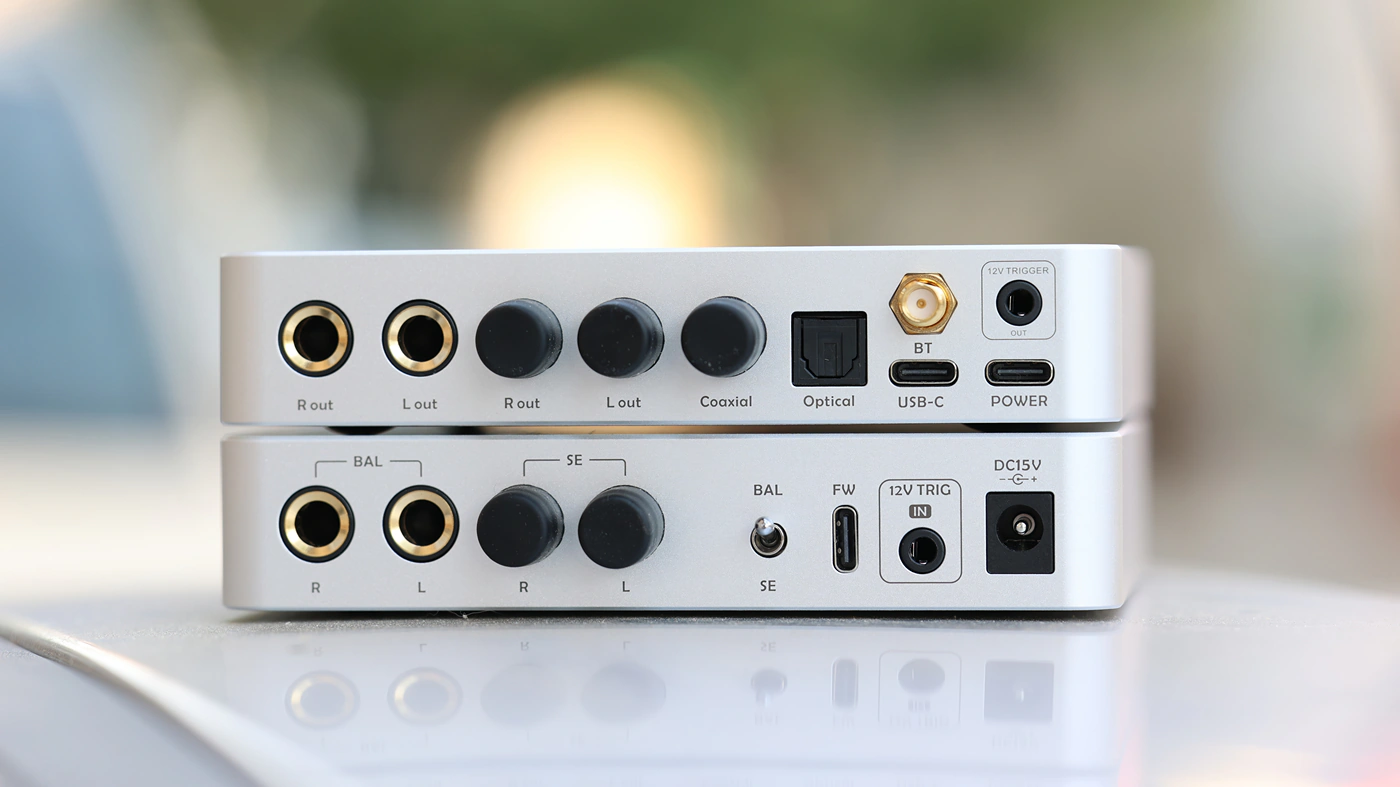
A really nice thing is that you can set, even with the remote, what output the DAC is currently powering, so you can select between the RCA and the TRS outputs, or do both at the same time. This was a bit problematic with the more affordable iFi Zen Dac 3, as that one would power all outputs at the same time with no way to disable either of them.
Sound Quality
Pairings – To test the Topping D50 III, i have used it as the DAC in multiple systems and powering multiple amplifiers including Keces s300+ driving Pylon Audio Diamond 30 MKII, HIFIMAN Prelude driving the mighty HIFIMAN HE1000SE, HIFIMAN Shangri-La Mini Electrostatic system, Violectric HPA V340 driving Audeze LCD-5, and Topping A50 III driving Sivga SV023 Headphones. With every single pairing I was able to understand the tuning and signature of D50 III better and better, and the fact that it has zero noise on both outputs. This is true even if you don’t use an external power supply, it is isolated really well from noise, so a perfect DAC with PRE function.
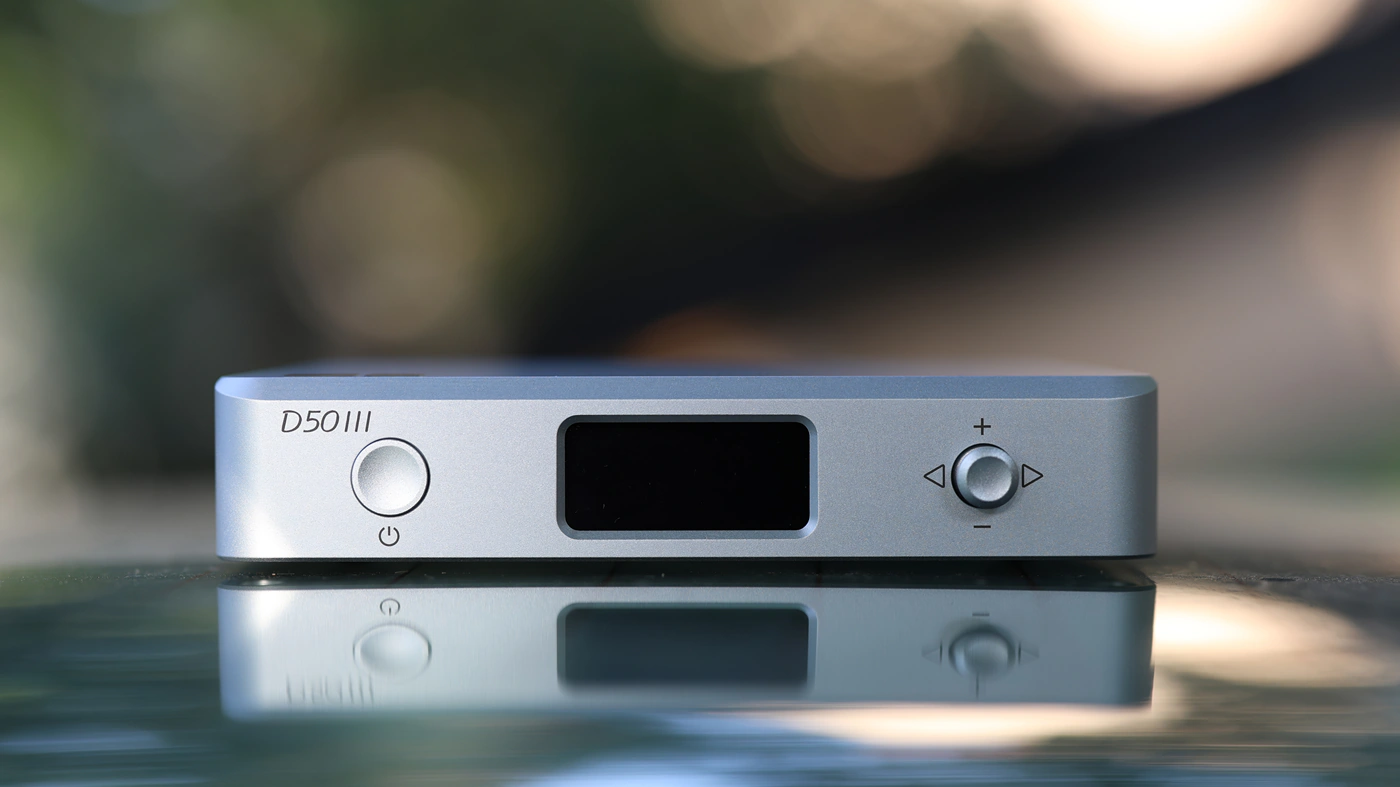
Overall Signature – The overall tuning of the D50 III DAC is natural, slightly warm, with a wide soundstage, and a fairly bright, airy treble. It has a good extraction and revealing ability for the treble shimmer, voices sound mostly warm and natural, while the bass is full, deep and has good presence down to 20Hz, the DAC being fairly transparent and linear in presentation. This means that it won’t take away anything from your music nor will it add information where it didn’t exist to begin with. The beauty is in balance here, and D50III can feed an amplifier the signal faithfully without changing it much. I personally like the tuning so much that I have not engaged the PEQ, but that is also an option if you want to add some bass, add some treble or remove either. If anything, it is on the silkier, smoother side of things.
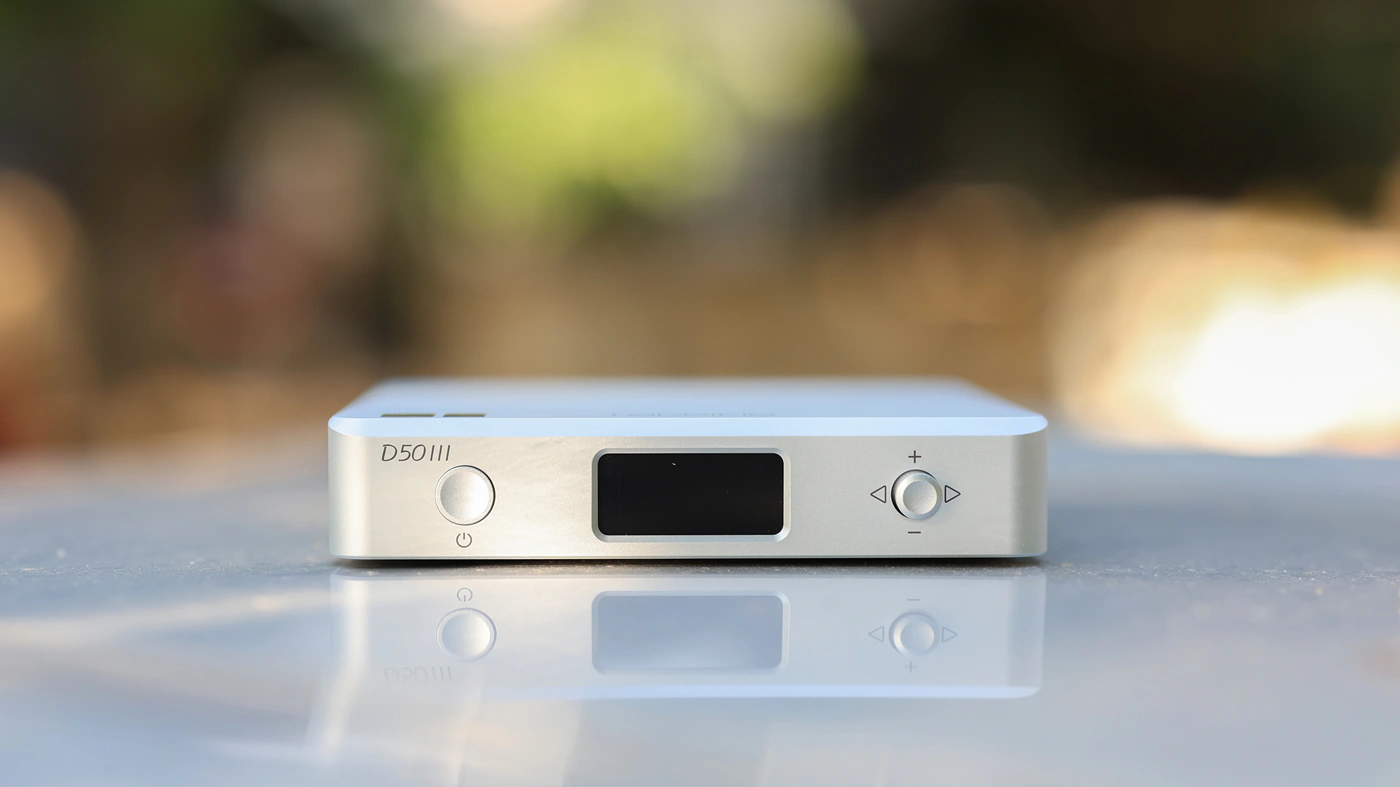
Bass – The low end of the D50 III is neutral in presence, clean in textures and natural in speed, creating a slow, beefy bass that fills the room and sounds fairly natural, distortion-free, but not overly warm or too forward. There is a slight hint of warmth on certain tracks, seemingly the DAC liking to add a bit of extra oomph and body to guitars, especially bass guitars, but with most music, the sound is balanced and the bass is very transparent, only present in tracks that intentionally show a lot of bass. The bass has equal presence and strength across the entire bass, but with rock and punk, it is neutral, while with EDM, it has proper rumble, especially with dubstep and more beefy music.
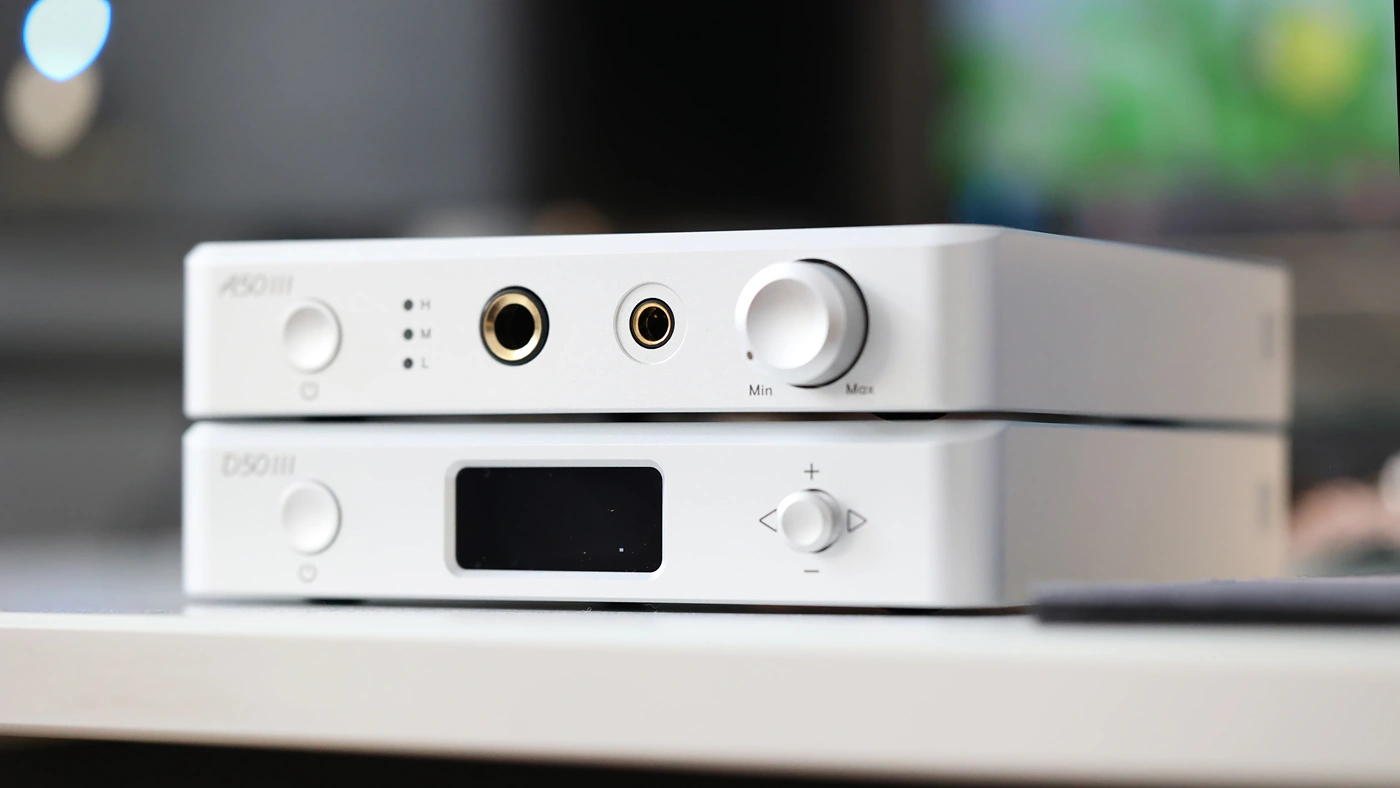
Midrange – The mids are the magic with Topping, and this comes as no surprise as the company used to be partner with SMSL, and we know they make a beautiful sounding midrange, so Topping follows the same pattern, offering an excellent vocal clarity, a softer, gentler midrange, and what I can only consider to be superb musicality across all voices. Male voices have a bit of warmth and musicality added to them, while female voices sound crystalline and clear, the DAC taking away harsher edges and harsher textures from music but allowing the sound to be as crisp and detailed as possible, enhancing vocal clarity, instrument accuracy and how beautiful the sound comes through like in general. I love listening to some J-Pop, J-Rock, Vocaloid tracks, and even VTuber music, but also to traditional rock and even RAP, as I can now understand the words spoken there much more easily.
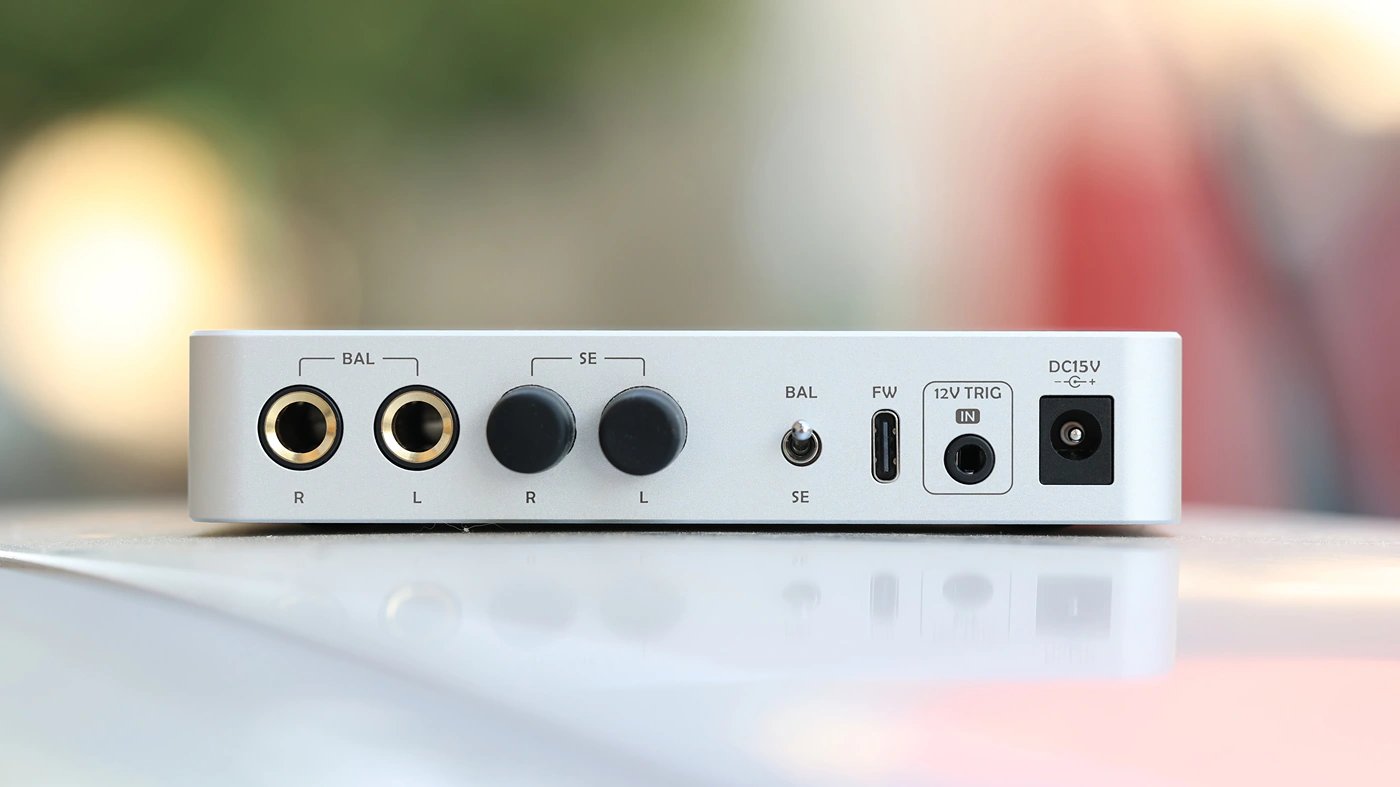
Treble – With a softer midrange that takes away the edge, we were clearly going to have a silkier treble that takes away all fatigue, yet has a surprisingly good extension, air and brilliance, D50 III having a great energy up top without going over the board with the textures. Most music will be relaxed and non-fatiguing, and even songs which are aggressive and too bright by nature, such as Infant Annihilator’s first album, sounds relaxed and lean, with no sharp or harsh edges. It feels like the DAC does filter the aggressiveness out, but it doesn’t sound or feel rolled off, so I give it full points for transparency, and would write off the presentation as its character.
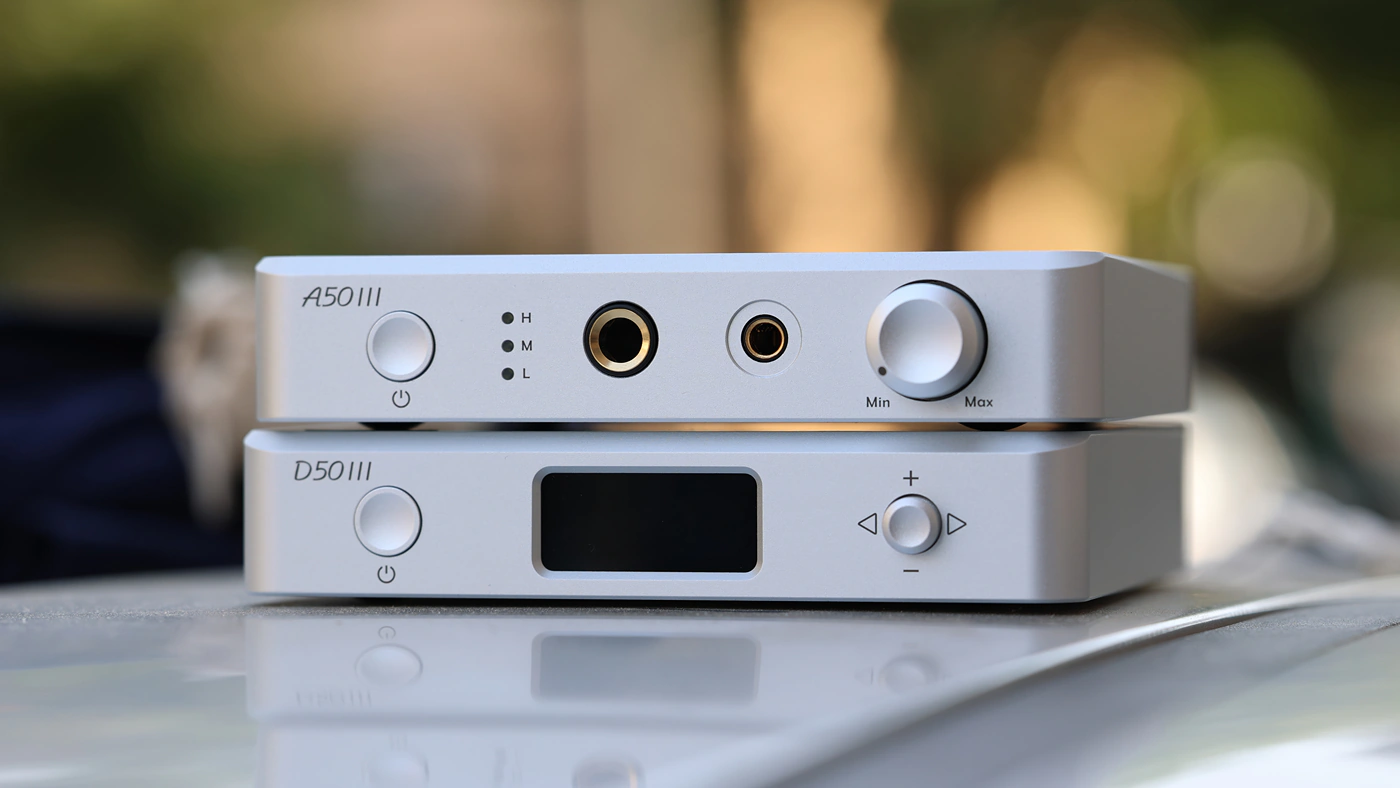
Volume Control – There is no big difference in the sound regardless of the volume you’re pushing with the D50 III. If anything, I prefer the sound a bit if leaving the output at 2V for RCA or 4V for Balanced. Setting it to 5V for Balanced works well for Keces S300+, but there is a distortion clipping noise with Topping A50 III for both RCA and TRS connections. Otherwise, the Pre function works perfectly, there is zero difference between setting the volume at max or min, or in between.
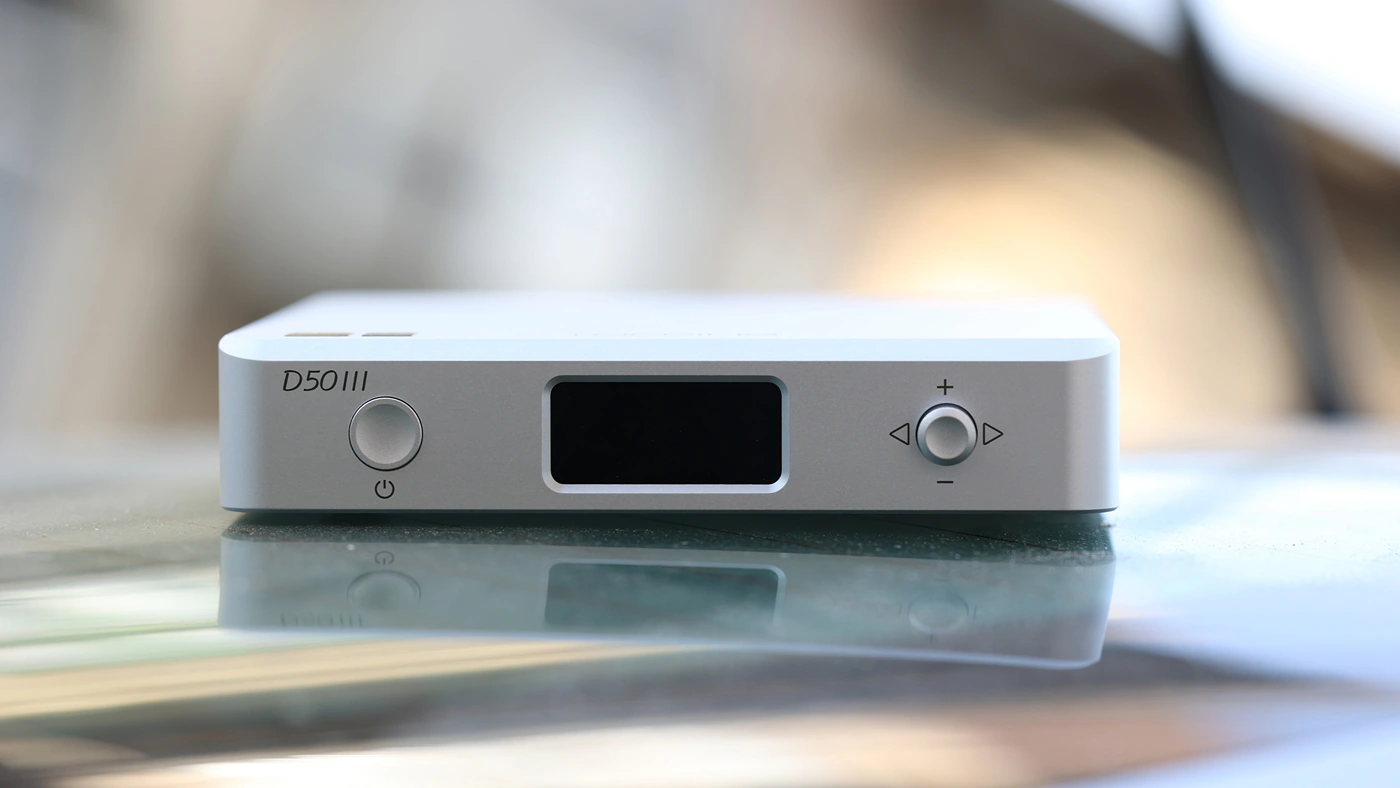
Dynamics / PRaT / Textures – Part of how Topping D50 III enhances the vocal acuity and clarity is through a slight dynamic compression, as it brings sounds that are less audible to the foreground, enhances the presence of background instruments, providing a wider, more spatially extended sound, but flattening the depth a bit. If you’re a fan of softer, gentler textures, with little to no forced elements, then D50 III will surely satisfy you well.
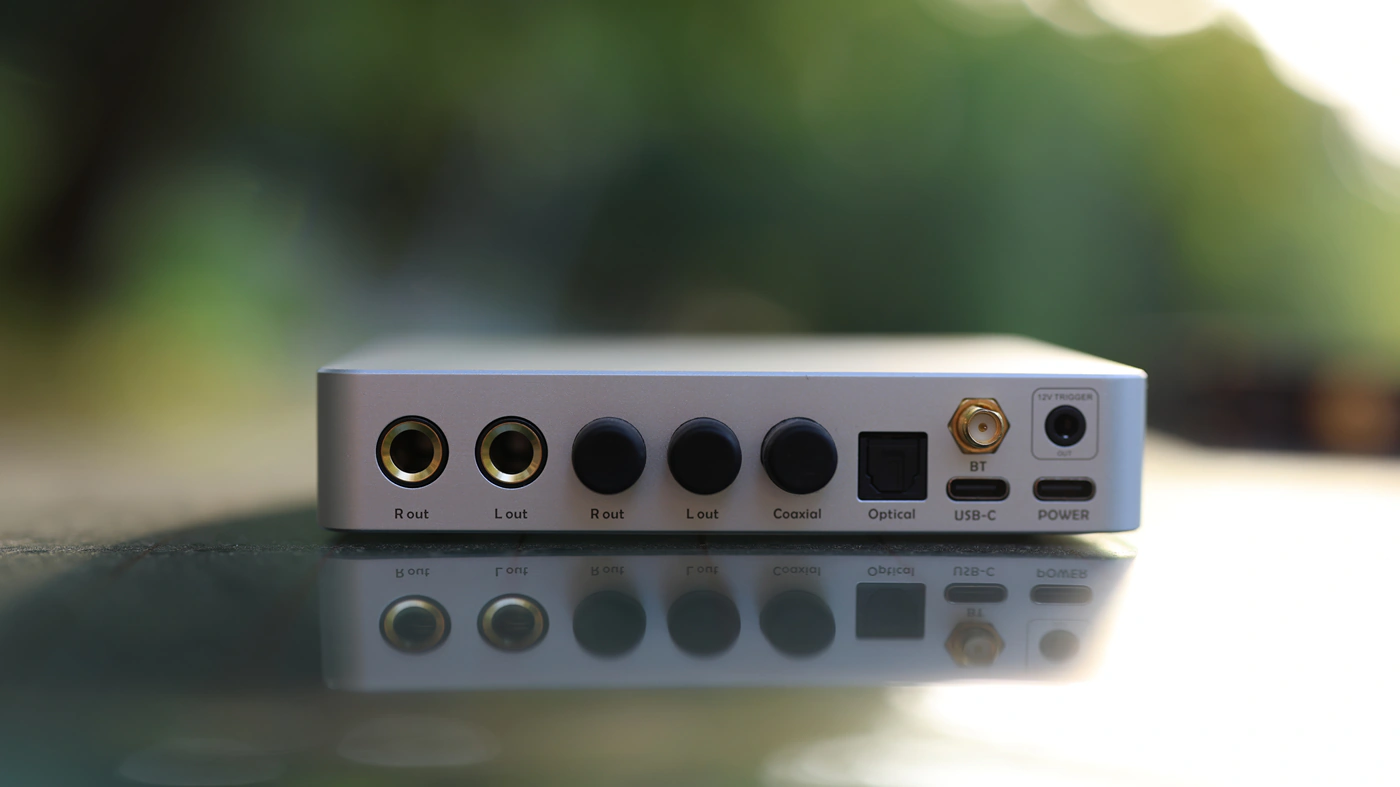
Soundstage – The soundstage of D50 III is a holographic, wide one, but with limited depth, as there’s a bit of compression going on, especially in the midrange, where background instruments are pushed forward, almost like a single layer that envelops the listener, but which can extend far and wide laterally. Special effects have a good amount of space to happen, but music always sounds close to you and never very distant, laterally impressive, but always present. Since the texture and dynamics are relaxed, you never feel like the sound is fatiguing, despite the more forward approach of the voices which have strong details and strong revealing ability.
Gaming Usage
The wide and holographic soundstage makes it really easy to hear and understand where a sound is coming from, which is useful for gaming, including competitive FPS or MOBA games. The slightly compressed dynamic range also makes it really easy to hear background sound, including sound effects, and gives a bit more presence to soundtracks, bringing them to the foreground.
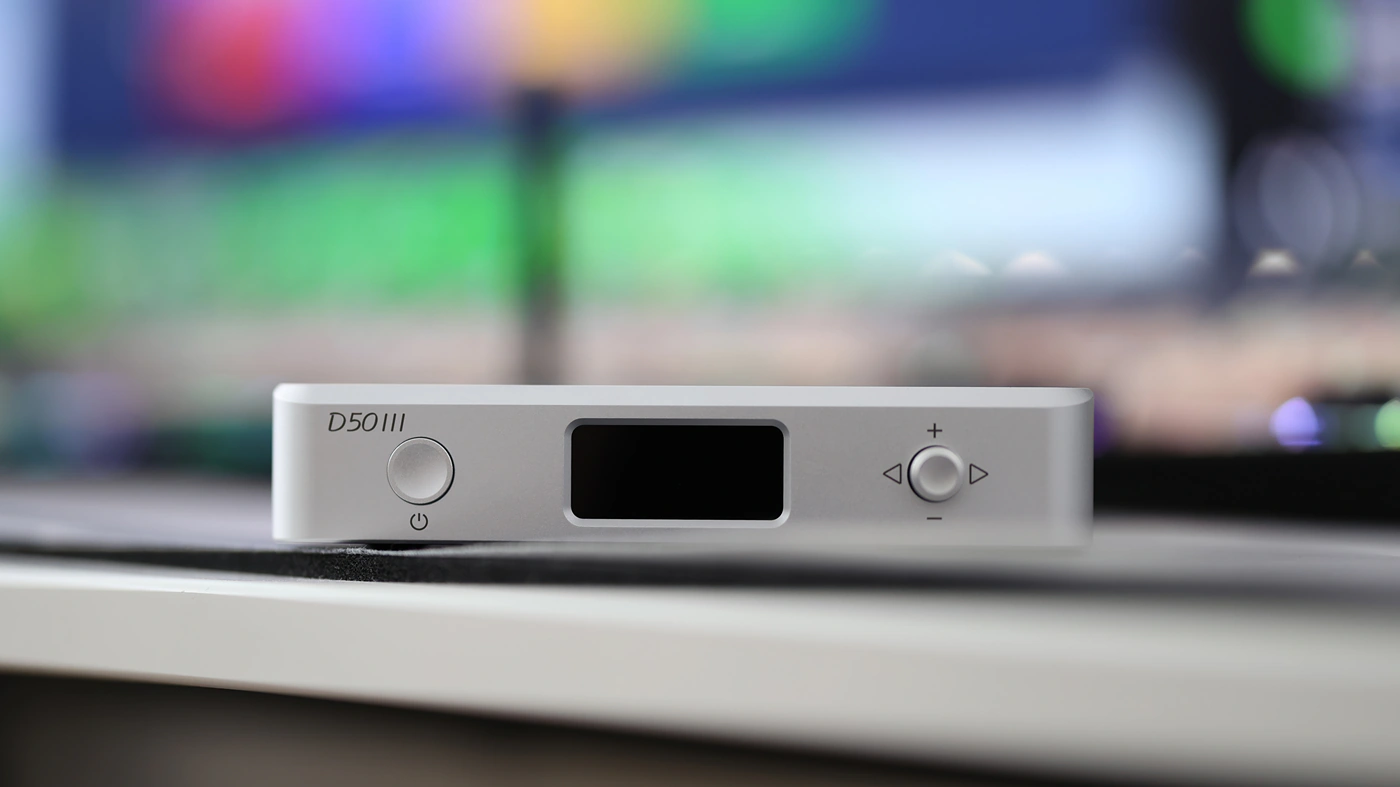
There is no USB DAC delay, and D50 III has Hi-Res support being compatible with all games. As it has Optical and Coaxial, it should be compatible with all consoles. There is no USB Driver needed, so multi platform support is great.
Comparisons
Topping D50 III vs Creative Sound Blaster X5 (229 USD vs 299 USD)
Build – Topping D50 III will win the beauty contest, it has a metallic chassis, it is much smaller and has TRS and RCA outputs, while Sound Blaster X5 only has RCA outputs. This being said, Creative put in microphone inputs, and also added the ability of driving headphones to X5, which feels like the most important usage scenario for it, as it has strong driving power, excellent sonics, and low noise on the headphone output too. With D50 III, you get a much lower noise floor for the RCA output though, so for a stereo system, it is the better DAC.
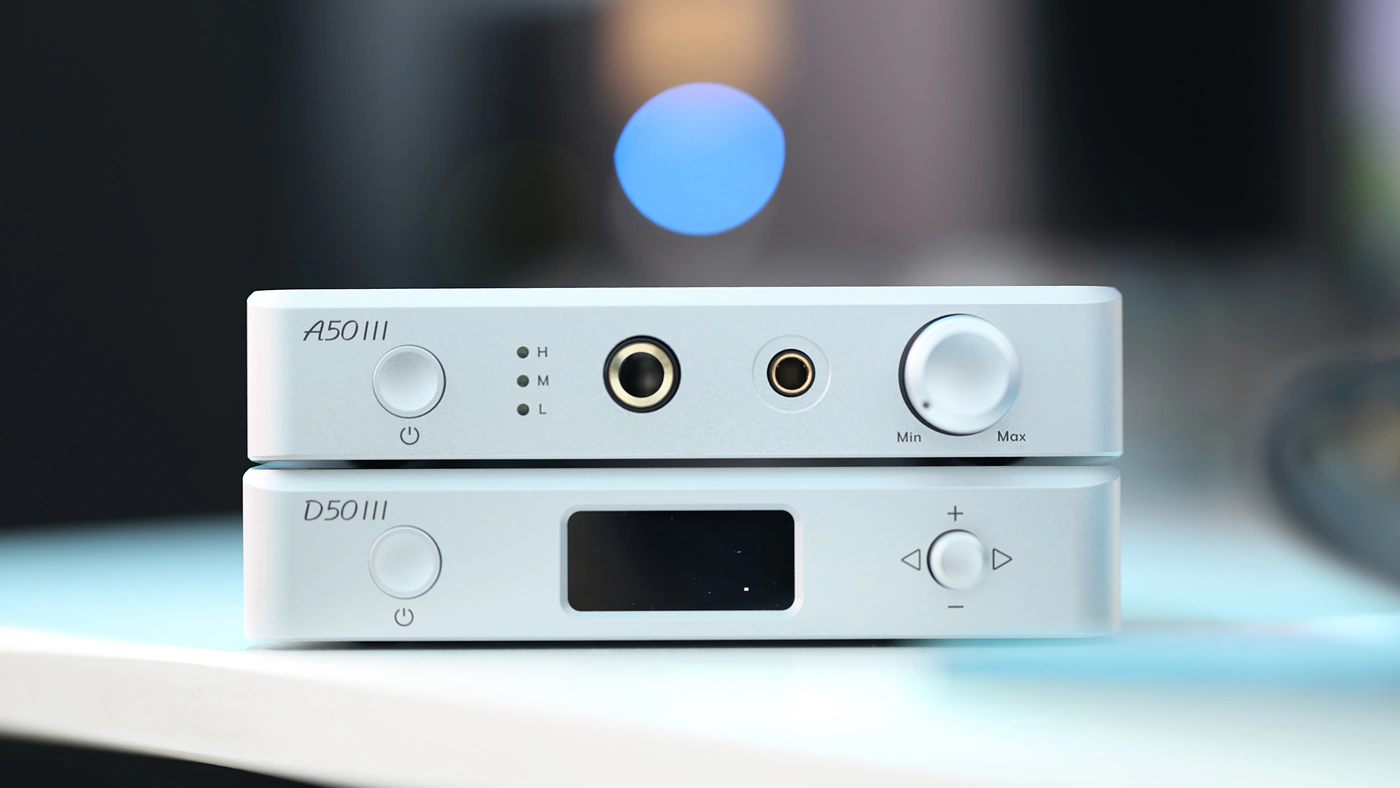
Sound – Sonically, if using both as DACs for a different amplifier, D50 III sounds more mid centric, the sound is slower and more relaxed. Creative X5 sounds deeper, the sound is quicker, brings more detail in music, especially a higher speed to textures, and a higher dynamic range. The EQ and DSP effects work equally well, but it takes considerably more knowledge and trial + error to get it right with D50 III, as it is a fully parametric EQ, while with X5 you can simply engage special effects without knowing too much about what they do, and still get an excellent result. Overall, for a clean DAC with no background noise, D50 III is easier to recommend, while for driving headphones, X5 offers a balanced headphone output, and strong DSP processing.
Topping D50 III vs Aune X1s GT (229 USD vs 349 USD)
Build – Aune X1s GT is larger, heavier, but it does sport headphone outputs too, while D50 III offers only DAC and PRE outputs. The Type-C input on the D50 III is a bonus, compared to the Type-B on the X1s GT, and we have TRS balanced outputs on D50 III, while X1S GT has only RCA outputs, although it has two sets of RCA outputs, one for DAC and one for PRE output. Both units have Coaxial and Optical inputs, along with Bluetooth. The headphone driver part of X1s GT adds quite a bit to the value, as it is a powerful, clean and controlled headphone output, with a warm and thick sound.
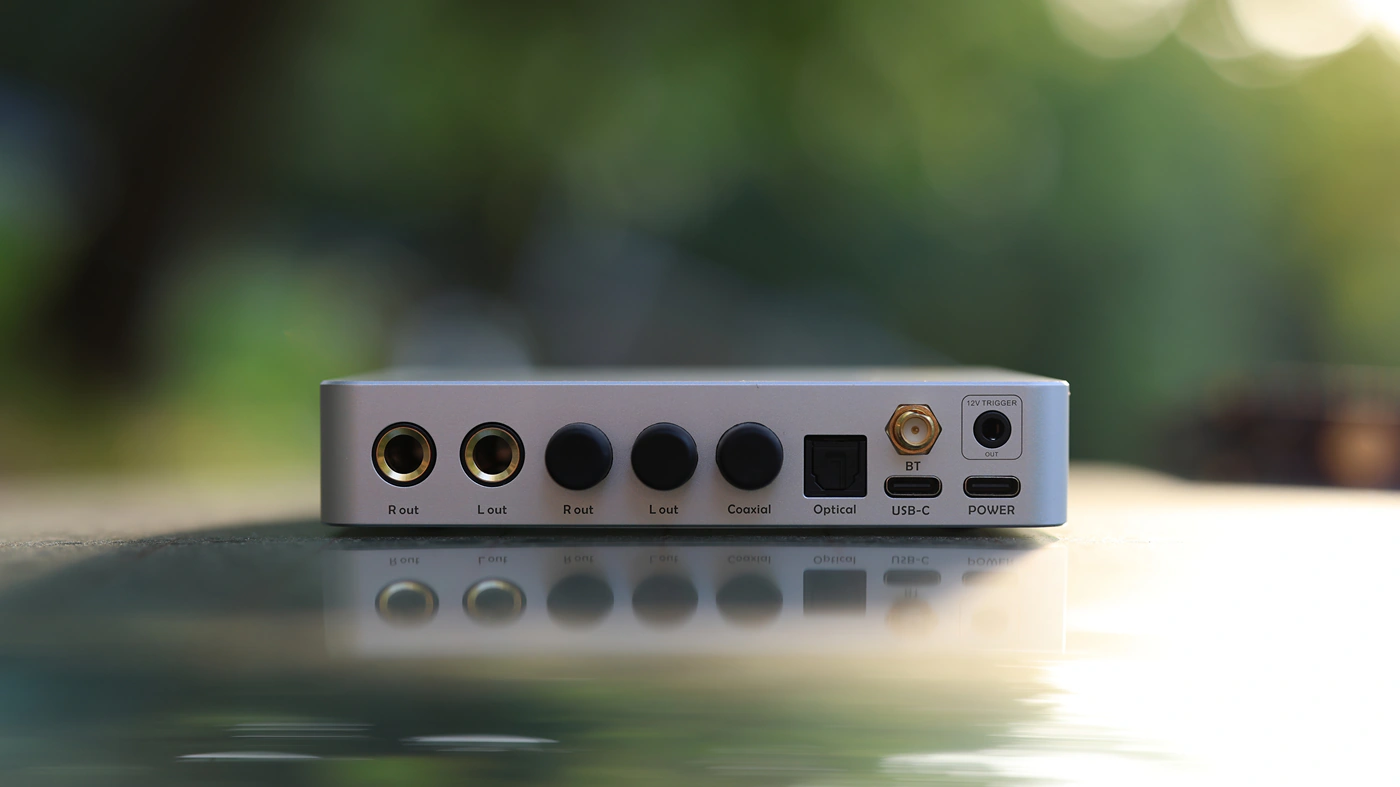
Sound – Using both a s DACs for a larger system is more intriguing than I thought it would be, as X1S GT sounds more neutral when used as a DAC, compared to its smooth and warm sound for the headphone output. In fact, D50 III sounds more as a DAC how X1S sounds when driving headphones than X1s GT, which is more neutral, cleaner, sharper, and has a fairly neutral and high resolution sound, with a faster speed, deeper soundstage and better impact. D50 III sounds softer, gentler, silkier and makes voices more audible, lyrics easier to understand, and it brings forward the midrange, pulling the treble and bass relative to the mids. D50 III has a lower noise for the DAC output, which may be important if you’re driving a stereo system, and as a standalone DAC, it is easier to recommend, plus it has PRE function, you can control the volume from a Bluetooth remote, and it just takes more space and gets less warm, while X1s GT is better if you need a headphone DAC / AMP and will be using it less as a DAC for a larger system.
Topping D50 III vs Pro-Ject DAC BOX DS (229 USD vs 430 USD)
Build – The inputs and outputs are better on D50 III, which has Type-C usb input, and both RCA and TRS outputs. The control is much easier on D50 III with its bluetooth remote, and as it can draw power from the Type-C input, you don’t need additional power sockets occupied. Optical and Coaxial inputs are supported on both units, but only D50 III has Bluetooth, and even LDAC bluetooth, both being great for listening to music and powering a larger system, but D50 III has no audible noise with any system, while DAC BOX DS does have an audible noise floor with Keces S300+. Only Topping D50 III has Parametric EQ with 10 bands, while DAC BOX DS doesn’t have any advanced DSP.
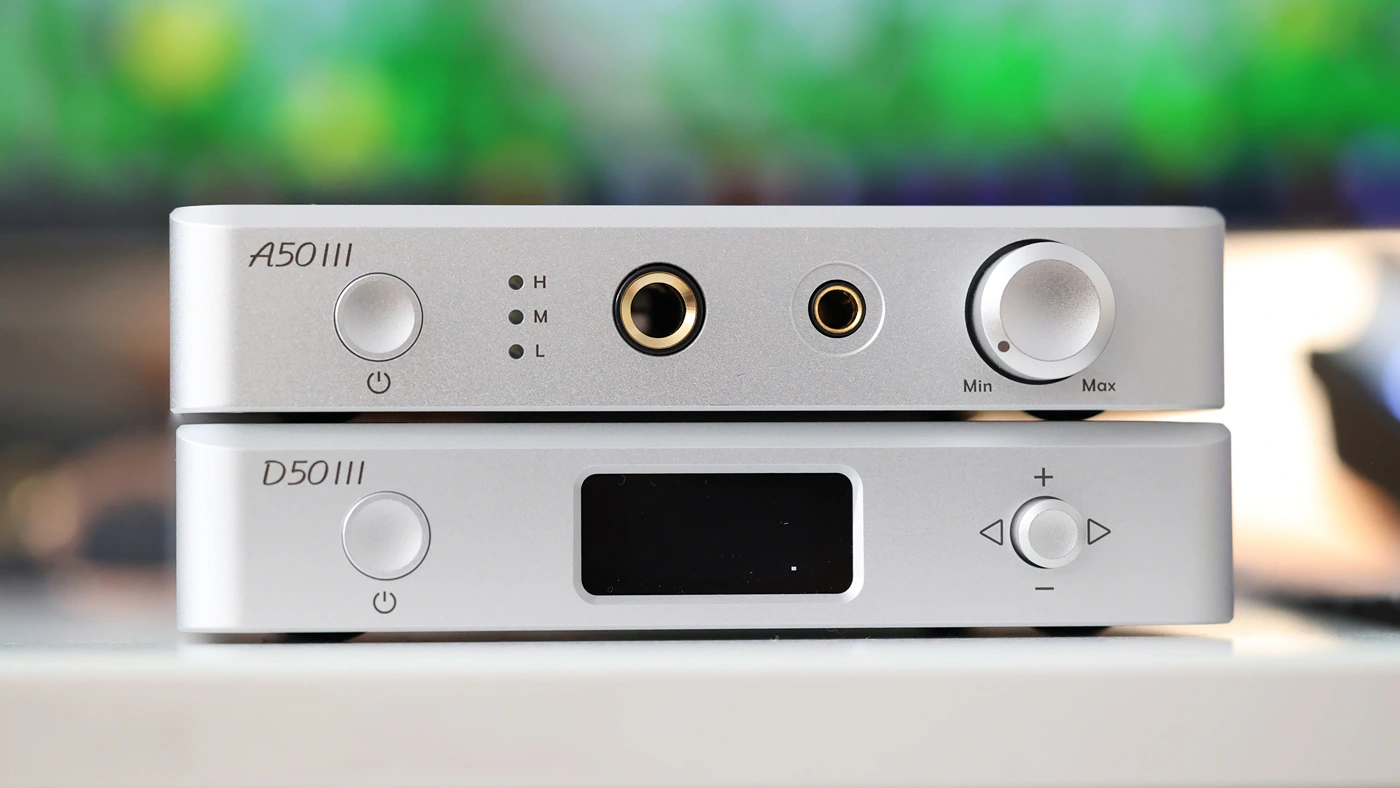
Sound – Sonically, Topping D50 III is far more revealing, brings voices closer to you, creating a sweeter female voice, warmer and more pleasing male voice, along with a wider, more holographic soundstage. The sound of DAC BOX DS is much slower, while D50 III sounds natural, silky and it brings the background layers more to the foreground, giving all micro details more spotlight, revealing more detail and resolution. While both DACs sound relaxed and laid-back, D50 III creates this sound with more resolution, better details and a more pleasing tuning, warmer and more rounded, without killing detail and resolution in the process, DAC BOX DS sounding relaxed and laid-back but sounding less detailed, and taking away the edge completely, while D50 III just relaxes it.
Value and Conclusion
I started with lower expectations since the price point of D50 III is fairly low, but it delivers on everything a DAC should offer, including strong transparency, good midrange acuity and ultimately it has no background noise, being rather good for both stereo and headphone systems. For headphone systems you even have the Topping A50 III matching Amplifier, which looks really nice too.
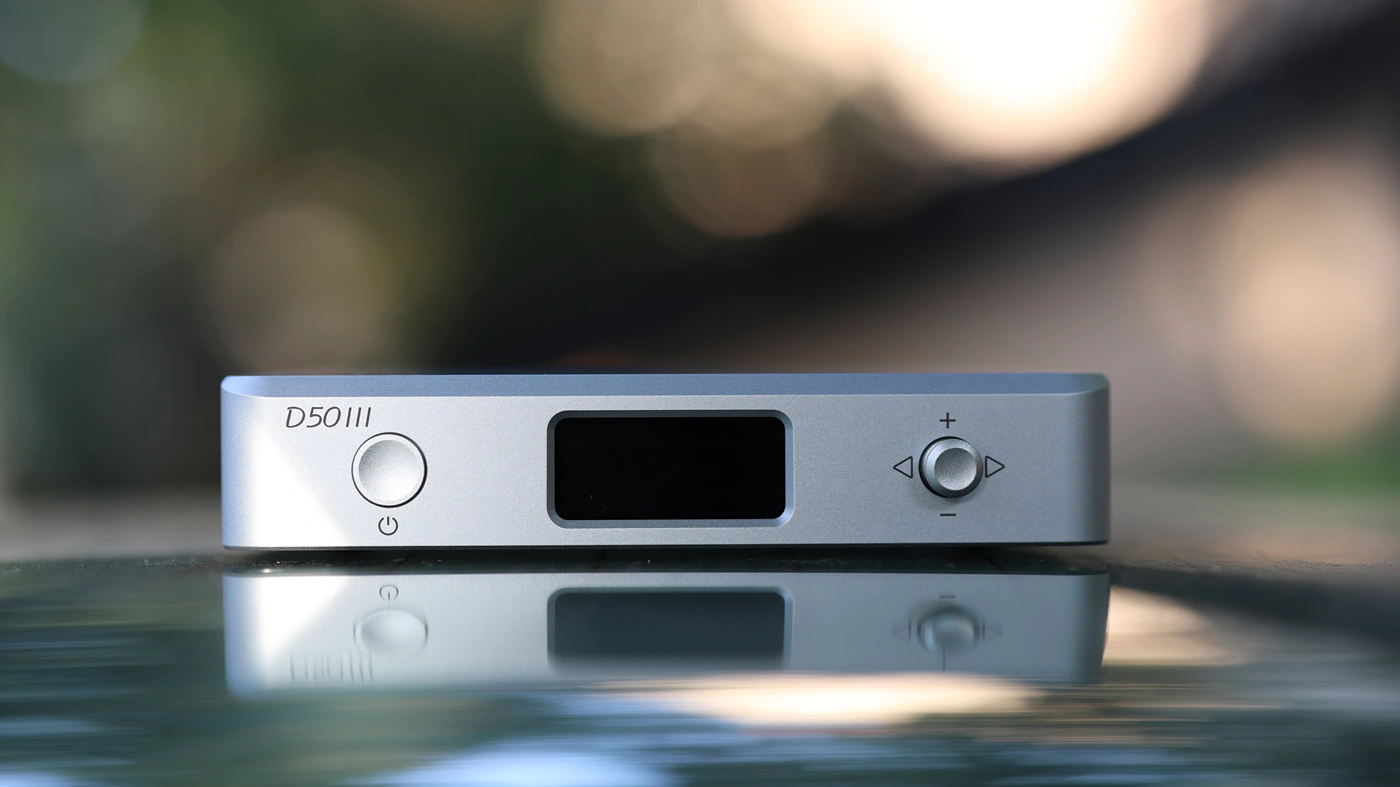
At the end of the day, if you need a hifi DAC with strong performance, low price, and a mid centric sound, exceptional build quality, nice design, and with strong support from the producer, plus no background noise, but strong resolution, and PRE function too, Topping D50 III is an excellent choice and one of the better units I heard recently.
Product Link
You can grab one here – https://amzn.to/4eFZ0vH
--- Please remember to stay safe, and always have fun while listening to music!---
- If you have a dime to spare, please donate, and help us! It would make the day brighter for me and my wife-
Full Playlist used for this review
We listened to more songs than those named in this playlist, but those are excellent for identifying a sonic signature. I recommend trying most of the songs from this playlist, especially if you’re searching for new music! The playlists are different for Spotify, Tidal and Youtube, and based on the songs I enjoy and are available on each!
https://www.youtube.com/playlist?list=PL_cjBXGmwSHSdGcwuc_bKbBDGHL4QvYBu
https://open.spotify.com/playlist/5J3oloz8Riy9LxEGenOjQ0?si=979ba4f082414be7
https://tidal.com/browse/playlist/330fd544-8e5b-4839-bd35-676b2edbb3d5
--- Contact Us ---





